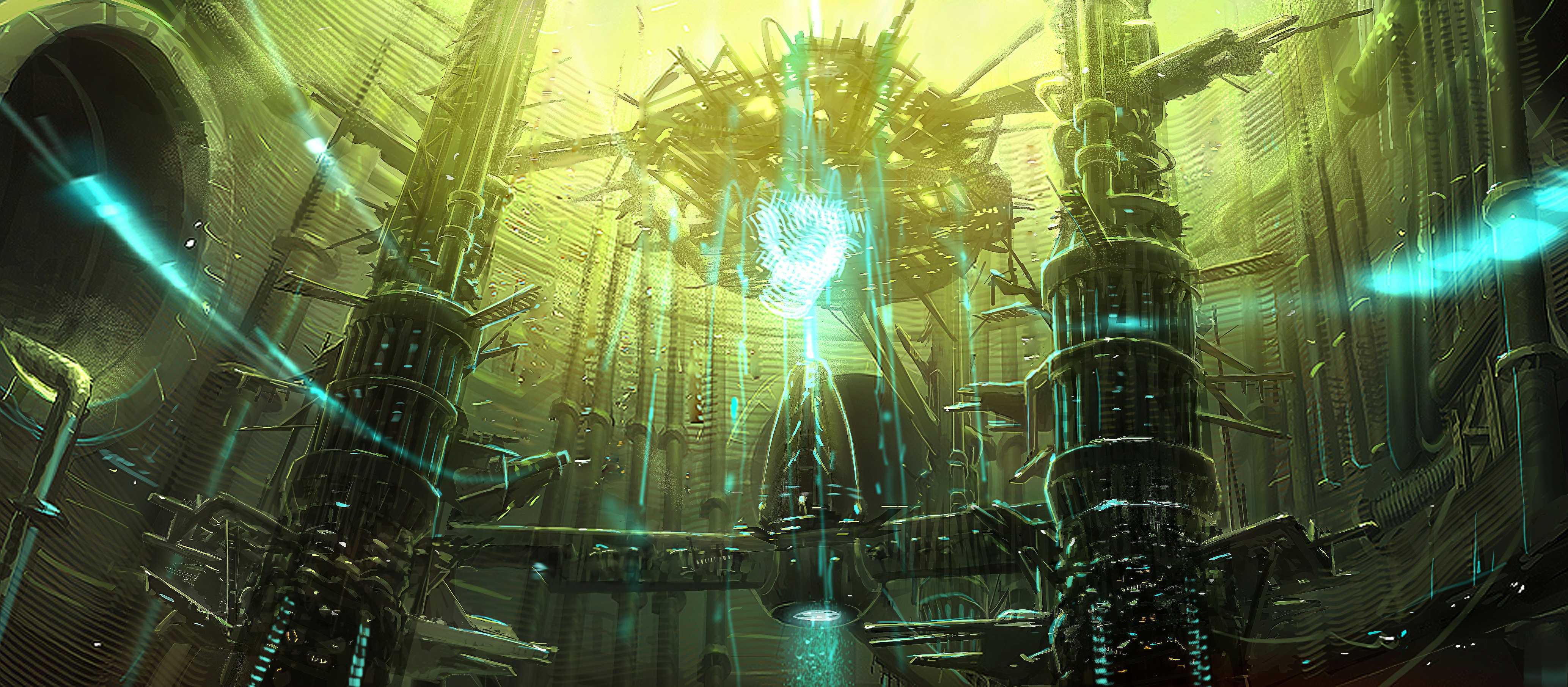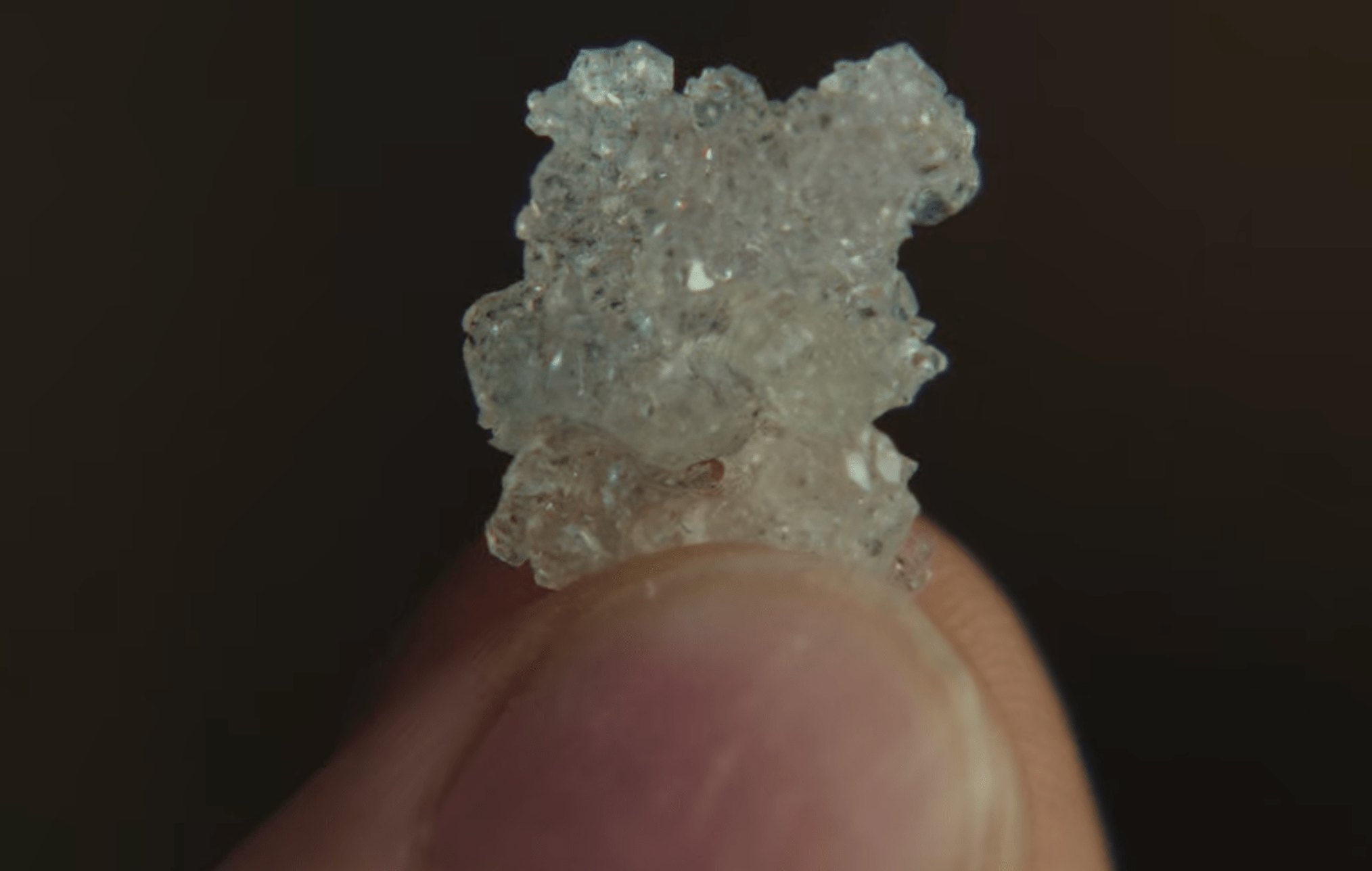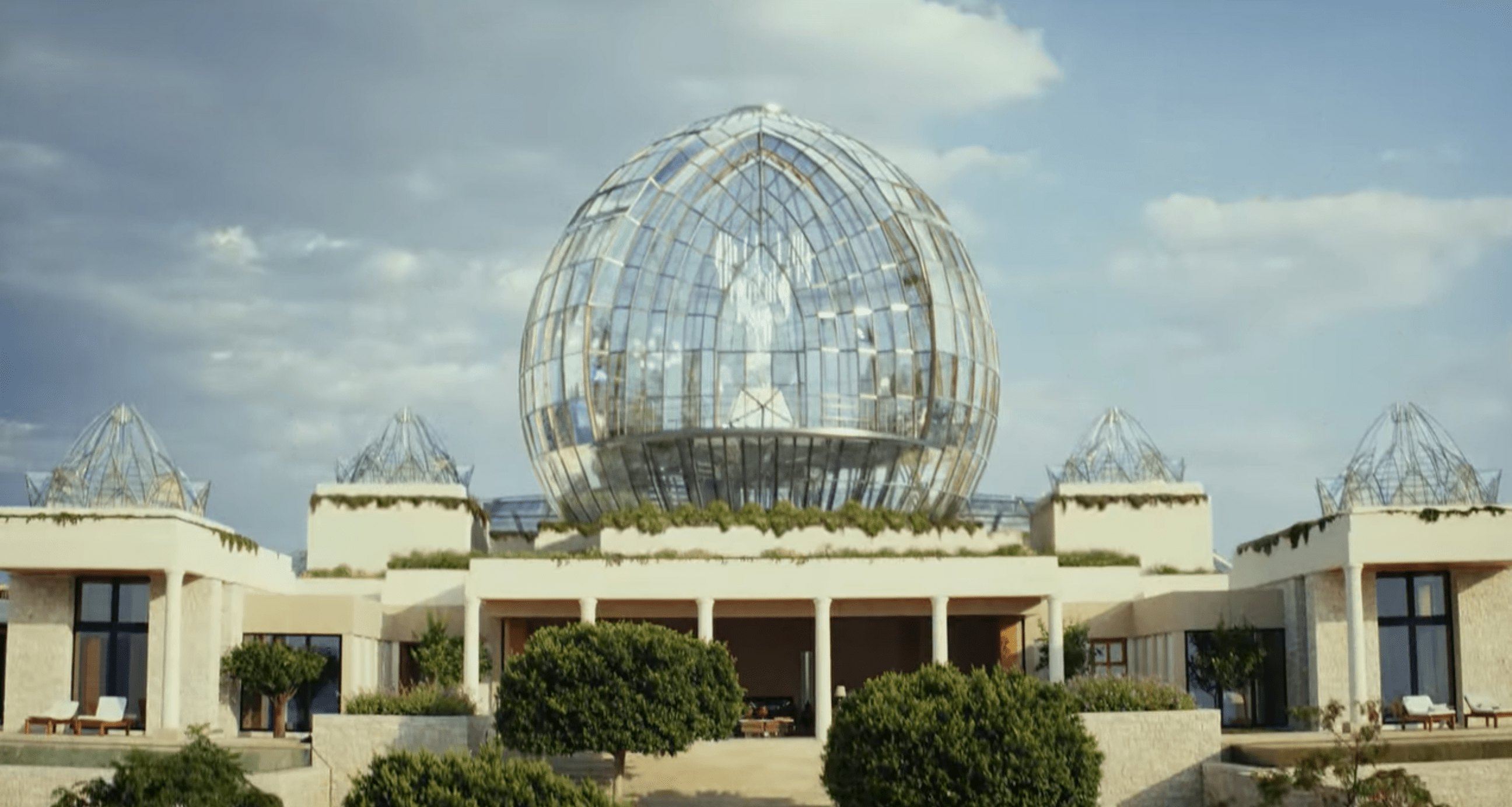
The most entertaining science fiction starts with a kernel of real science and grows it into something far beyond the boundaries of our current reality.
But instead of a kernel, the scientific nugget arrives in the form of a crystal in Netflix’s latest sci-fi-inspired murder mystery caper, Glass Onion.
***
(Spoilers ahead for Glass Onion!)
***
Glass Onion imagines what it would be like if a murder unfolded during a weekend getaway on an eccentric billionaire’s island. The movie’s title refers to the massive mansion — in the shape of a glass onion — which is powered by a small hydrogen crystal the billionaire dubs “Klear.”
It’s a supposedly radical hydrogen fuel technology that fits into a small crystal you can hold in your hand. Here’s how the movie describes Klear:
“I’m gonna unveil the future. You know what this is? That’s a new solid hydrogen fuel. It’s incredibly powerful. Radically efficient. Zero carbon emissions, and it’s derived from abundant seawater. I call it Klear, with a K. And at this event, we’re going to announce Klear America. Our affordable home power solution. Klear is going to be powering people’s dreams, all over this country, by the end of this year.”
It sounds like an incredible — and maybe even slightly plausible — technology, as far as sci-fi movies go. But David Cebon says the science in Glass Onion “is currently beyond human practical capabilities” and is “much more like science fiction than engineering.”
Inverse interviewed hydrogen experts to unpack whether the Glass Onion’s sci-fi premise may really be as hollow as its name suggests. Let’s dive in.
Reel Science is an Inverse series that reveals the real (and fake) science behind your favorite movies and TV.
How does green hydrogen energy work?
Before we can explain whether Glass Onion’s hydrogen crystal is plausible, you have to understand how hydrogen actually works.
Hydrogen isn't a power source in the way solar or wind are. Hydrogen energy acts more like a carrier, or something that stores already-produced energy. Think of your phone battery, which doesn’t produce energy on its own. Often, the energy hydrogen stores has to be produced by water electrolysis, powered by “dirty” sources like coal or gas, or “clean” like sources like wind and solar.
“Hydrogen is a carrier of energy, basically, but you have to put in the energy upfront, and that's what's missed in this film,” Gareth Dale tells Inverse. Dale is the associate head of the department of social and political sciences at Brunel University London and has written about green hydrogen.
To produce hydrogen from renewable energy, you’d need to use energy from a clean source — like wind turbines — to split water into its respective parts: hydrogen and oxygen. It’s a process known as “electrolysis.” You can use electrolysis to make hydrogen from seawater, as in Glass Onion, but you need to remove all the salt from it beforehand, which makes it impractical and energetically inefficient.
Hydrogen has been used to power fuel-cell cars and there are several thousand currently in operation in California. While cars run on hydrogen don’t emit any emissions, the energy used to make that hydrogen can come from fossil fuels, so it’s not entirely a clean technology unless renewable sources are used on the production side.
“With hydrogen, when you use it in a fuel cell car, you get no [carbon] emissions on that usage side,” Keith Wipke tells Inverse. Wipke is the program manager for the National Renewable Energy Laboratory’s Fuel Cell & Hydrogen Technologies program.
Can you make solid hydrogen into a crystal?

There are really two questions at play here. The first is whether hydrogen can be made into a solid crystal form, and the second is whether the amount of hydrogen contained in a crystal could really contain massive amounts of energy.
Dale says Glass Onion’s premise is “pure fantasy” and says hydrogen “is not such high density that a lot of energy [can be] concentrated into one tiny little crystal.”
“We don't know of any way to make a solid form of hydrogen that you could just have out in the air and holding your hands,” Wipke says.
But that doesn’t mean Glass Onion’s research is totally half-baked—– it’s probably (loosely) based on real science. There are two ways to make solid hydrogen, David Cebon of the Hydrogen Science Coalition tells Inverse. Cebon is a professor of mechanical engineering at the University of Cambridge.
“Hydrogen does become solid and extremely low temperatures, like 14 Kelvin, which is -259 degrees Celsius,” Cebon says. Above those temperatures and it wouldn’t form into a solid. To store it, you’d need a cold chamber — not in a room-temperature mansion like in Glass Onion.
There is a hypothetical way to make hydrogen at room temperature. It basically involves compressing hydrogen at very high pressure — five times the strength of the strongest steel.

Cebon says that at extremely high pressures, it’s believed solid hydrogen will take on a “crystalline metallic structure.” In other words: a crystal.
“If you could generate extremely high pressures to manufacture metallic hydrogen, it is plausible that it could be a stable crystal at room temperature and pressure,” Cebon says.
The problem is that we haven’t verified anyone actually who has successfully made metallic hydrogen. A team of French researchers claimed to have achieved metallic hydrogen, but these reports have not been independently verified.
Based on current scientific knowledge, the closest you could actually come to devising solid hydrogen form like in the movie is “to make a solid molecule that reacts with water to make hydrogen,” Paul Martin, co-founder of the Hydrogen Science coalition, tells Inverse.
Some potential candidates for this solid molecule include sodium borohydride, aluminum, or magnesium hydride. Martin says the Fraunhofer Institute proposed mixing magnesium hydride with grease to form a “power paste” to store and release hydrogen, but he doesn't believe it’s very practical.
Will we power our homes with hydrogen energy?

The movie’s eccentric billionaire touts his hydrogen crystal, Klear, as a renewable home energy device. Even if you could make metallic hydrogen, Cebon says, “it would take a huge amount of energy.”
Martin agrees: “You'd need quite a lot of magnesium hydride crystals to power your house- not just a little. And a lot of water, too.”
So, we won’t be powering homes with Klear anytime soon, but Cebon says it’s a “nice science fiction” idea.
Still, the sci-fi movie begs an interesting question: if we have hydrogen fuel-cell cars, then why not power our homes with existing green hydrogen technology?
One reason: safety. Hydrogen is highly flammable, and you need to handle it with extreme caution. (Just ask the Hindenburg.) “Safety issues associated with using hydrogen as a replacement for natural gas in the home are a very real concern that the movie was parodying,” Martin says.
But Wipke says the movie’s portrayal of the hydrogen crystal — which ultimately sets the Glass Onion mansion on fire — risks de-legitimizing existing safe uses of hydrogen, which has been used not only in fuel-cell cars but to make ammonia for fertilizer.
“I think the movie portrays hydrogen as something you should be afraid of. And that's just simply not based in the reality of how hydrogen is used today,” Wipke says.
Another reason why we’re not using hydrogen to power the electric grid: it simply requires too much energy to make hydrogen from electrolysis. Martin says hydrogen contains about a third as much energy per liter as natural gas.
Wipke says that if all the hydrogen in use in the U.S. came from “clean” energy instead of fossil fuels, we’d basically need to double our renewable energy capacity. Expanding green hydrogen usage to power homes — as Glass Onion suggests — would require building out our renewable energy capacity on a massive scale we can’t possibly achieve in the near term.
So, maybe the real takeaway from Glass Onion is that we shouldn’t bank on moonshot clean energy solutions so rich people in America can keep powering mansions, but instead, focus on solutions that involve scaling down our energy usage through high-density housing and investments in public transit.
“If the rest of the world, used as much energy per person as the United States of America does, then, however many wind farms you build and however many solar fields you build, you're never going to be able to get enough energy to power the whole world,” Dale says.
Glass Onion: A Knives Out Mystery is streaming now on Netflix.







